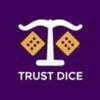I read your column every week but have not seen any comparison between blackjack and Spanish 21. I know that the number 10 card is removed from the Spanish 21 deck, giving you less of a chance to get a two card 21, but it also gives you less of a chance to bust when you take a hit with 16 or less. Also, Spanish 21 has more payoffs than Blackjack giving you a better chance to win. When playing basic strategies for both Blackjack and Spanish 21, which game has the better odds for the player? Frank S.
You mentioned in your question one of two notable variants when comparing Spanish 21 to the regular blackjack game. With Spanish 21, all the 10s (not the Jacks, Queens, and Kings) are removed from the deck. Also, the player gets paid for a hand total of 21, or the standard three-to-two payoff for a blackjack, even if the dealer’s hand is a natural blackjack.
Additional player-friendly rules are; doubling down on two or more cards, pair-splitting and double downs up to four times after splits, bonus payoffs for different combination 21s, and although I have never actually popped my peepers on this one, a super bonus that pays out $1,000 for a suited 7-7-7 when the dealer’s up card is a seven.
So, Frank, even without those 10s in the deck, does Spanish 21 with perfect basic strategy, offer better odds for the player than does blackjack, utilizing the same?
Almost. By employing Spanish 21 basic strategy-which obviously differs from normal blackjack strategy-you force the house edge down to 0.8%, which is only slightly higher than the 0.5% you can achieve using perfect basic strategy at blackjack. Of course, if you deviate from it, the casino edge can go up to three percent, about the same as in seat-of-the-pants blackjack.
I run a charity poker room and have a blackjack table. In charity poker rooms the charity wins all ties. I have a couple of players who I think are counting cards on a 6-deck shoe. They seem to win every time. Is this possible? Are they counting cards? Are not the odds still in favor of the charity. Any advice or knowledge you can give me would be great. DSC
Because charity games are deliberately designed to feed a buck or two into the community coffer, the charity blackjack game wins ties at blackjack. Players should consider pushes the cost of philanthropic entertainment to support worthy causes. A charity blackjack game that keeps ties has an advantage of 8.8% over the player.
No card counter can beat an 8.8% edge, so, the probable answers here are a) they are NOT cheating, they have just been lucky, or b) dealer collusion, that rouge dealer on the inside. If it’s always the same dealer, pitching cards to the same players, mystery solved, or c) charlatan players who have decided to bring their own cards to the party or who mark the current ones on the game.
Suspicious play warrants decks being pulled off the game and inspected. An expert, not you, should look for bends, crimps, bumps, scratches, inks, pigments, the latest in shade technologies, etc. From here forward, anytime you swap out decks, make sure the cards are new, and of a different color. Castrate the used decks by having holes punched through the middle, corners cut off, or large black spots applied.
You also have an assortment of countermeasures that casinos utilize to offset a counter’s advantage. One such that you are using to impede skilled blackjack players is a six-deck shoe. For giggles, bump it to eight. You can also shuffle at will to thwart bet variance, and you can instruct the dealers to move the cut card closer to the top of the shoe against assumed counters.
Granted, the last thing a charitable organization needs are card counters on the game emptying the tray, but with your built-in 8.8% edge, and counters maxing out with a 1.5% advantage, less outright cheating, I’m coming full circle and stating that my inclination is that it’s a fluky streak by the players in question.
Gambling Wisdom of the Week: “No dog can go as fast as the money you bet on him.” –Bud Flanagan




















